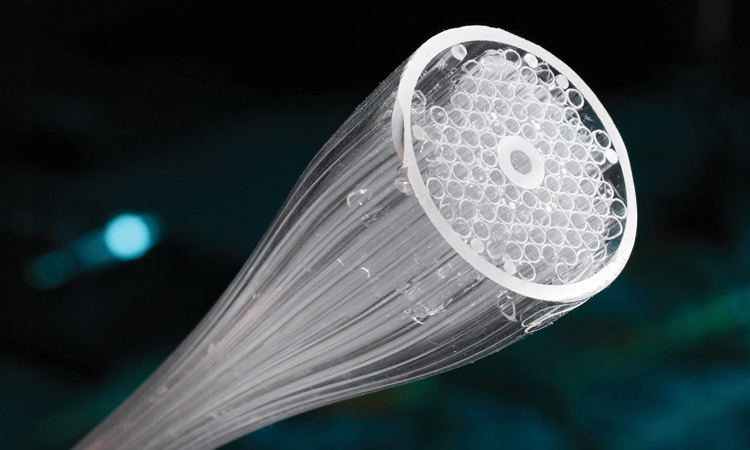Article
In a significant leap forward for global information transmission, researchers from the University of Southampton (UK) have developed a new fiber-optic cable design that delivers remarkable improvements in speed, efficiency, and data capacity.
This design was created in collaboration with Microsoft Azure Fiber scientists.
Published in Nature Photonics in late September 2025, the breakthrough introduces an optical fiber that guides light through a hollow air-filled core instead of the conventional solid glass. As a result, it achieves the lowest signal loss ever recorded, enabling faster and more energy-efficient long-distance data transmission.

“This is a breakthrough in the way we transmit information,” said Professor Francesco Poletti, Professor of Optical Fiber Technology at the University of Southampton and Chief Scientist at Microsoft Azure Fiber.
“For four decades, the performance of fiber-optic cables has remained largely unchanged. This new design breaks that barrier, demonstrating the potential for faster data transfer, lower energy consumption, and greater bandwidth. It represents a fundamental shift in global connectivity. Our results are the culmination of over 10 years of research and development, made possible through creativity, collaboration, and dedication across interdisciplinary teams at Microsoft and the University of Southampton.”
At the heart of this advancement lies the Dual Nested Anti-Resonant Nodeless Fiber (DNANF), an intricate structure invented by researchers at the Optoelectronics Research Centre (ORC) at the University of Southampton and Microsoft Azure Fiber.
These fibers feature a hollow central core surrounded by ultra-thin glass membranes arranged in nested layers, allowing light to travel primarily through air — significantly reducing scattering and absorption, the key causes of loss in conventional optical fibers.To visualize the impact:
In the new DNANF fiber, light can travel 33 km before its power is reduced by half, whereas standard telecommunications fibers, with typical loss at about 0.2 dB/km, reach only 15 km before experiencing the same level of attenuation.
This effectively doubles transmission distance without amplification, opening the door to lower energy usage and reduced infrastructure costs in future networks.
A New Era in Optical Communications
Jamie Gaudette, Partner Network Engineering Director at Microsoft, stated:
“Advances in ultra-low-loss hollow-core fiber (HCF) technology will enable Microsoft to transmit more data using less energy, with significantly lower latency across our global network. Together with the team at the University of Southampton, Microsoft Azure Fiber is redefining the physical layer to deliver faster, more reliable, and more cost-effective cloud experiences for customers worldwide.”

For more than 40 years, traditional glass fibers have been constrained by light loss over long distances. DNANF fibers fundamentally transform this landscape.
By guiding light through air with unprecedented precision, they deliver ultra-low attenuation across a wide wavelength range, more than doubling the usable optical bandwidth of standard fibers.Researchers believe this technology may become the backbone of the future Internet, reshaping data center interconnects and cloud infrastructure worldwide.



